 Home
Home


Plasma cutter v. cheap angle grinder
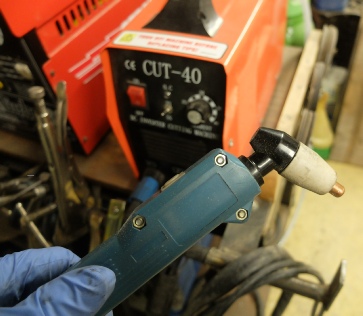
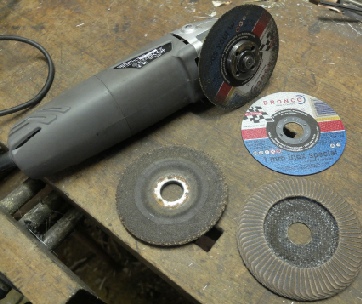
A plasma cutter certainly seems like a magic piece of kit. For a relatively modest outlay you get a tool which, when things are going well, carves through 6 mm or more of solid steel like a hot knife through butter. And for such a result there is relatively little sound and fury and not much heating of the metal. High voltage in the torch breaks down the molecules in the air passing through it into ions or plasma (the fourth state of matter) which are super hot and blast through metals as if they weren’t there (on a good day!) You can get one for about £250 but it needs a reasonably powerful compressor -
A 115mm angle grinder costs about £20. (But you could pay more and get a better piece of kit. Alternatively, buy two and stop having to swap between a cutting disc and a flap wheel.) Also, you can’t cut stone with a plasma cutter or clean scale and rust off a sheet of metal etc. Whatever else you’ve got, you surely can’t do without a 115mm angle grinder.
Those thin discs cut so cleanly and the whole thing is so light it can be easily used one-
So how useful is a DIY plasma cutter? Well it scores over an angle grinder in terms of speed, especially for thicker metal. Also grinding discs don’t work well with aluminium. However, for a couple of cuts it may not be worth the bother of setting it up.
The big advantage of the plasma cutter is, of course, it can cut curves and cut holes, even square ones. Make a template and just run the torch round it. I’ve used hardboard but it doesn’t last long!
I always run the torch along a straight edge (or template) as I find cutting freehand accurately very difficult. You need to draw the torch across the metal at a steady (and correct) speed. Stop and you get all sorts of splatter and wide cut. Too fast and the cut doesn’t go through and the arc bounces back and makes a mess on the nozzle. The nozzles with my torch are designed to touch the metal being cut. This should make wielding the torch easy but very often there is a tiny amount of spatter, the nozzle catches and a mess is made of the cut. This often happens if the nozzle is not brand new.
I find it is better to use a guide which allows the porcelain shroud to run on top and which keeps the nozzle a fraction of a millimetre from the surface. A very light smear of copper grease on the guide stops the torch sticking.
With a small torch like this resting or almost resting on the metal, it’s quite difficult to see the arc itself so there is a temptation not to wear a welding mask with uv protection. However, I would err on the side of caution here as “arc eye” damage is permanent!
So is a plasma cutter worth it in a DIY situation. Well if I am honest, probably not. However there are those situations like needing to cut a 100mm hole in a 6mm steel plate where it could be invaluable.
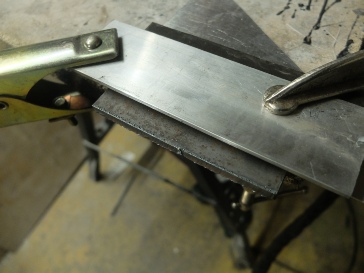
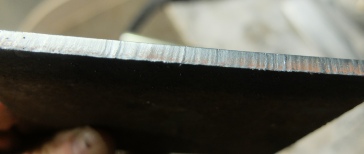
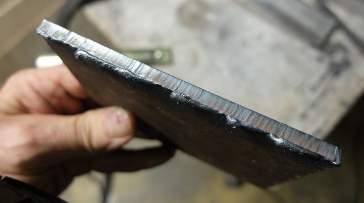
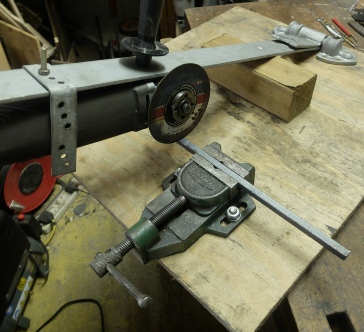
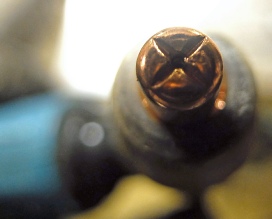
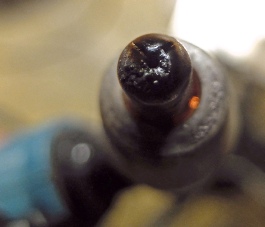
Costs less than £20 (plus discs)
Cut off wheel made from old hinge (Dude, where’s my guard?)
(Cheap) plasma cutter, £250 plus compressor and “consumables”
This “consumable” might have been consumed!
Pile of aluminium sheets to keep the torch a little under one mm above the surface
Some slag often forms on the underside
If everything is going tickety boo, the slag taps off and it looks like this
New nozzle, pic makes it look old
Grinder update
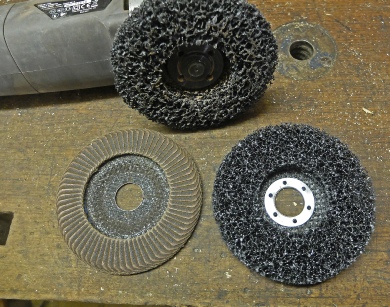
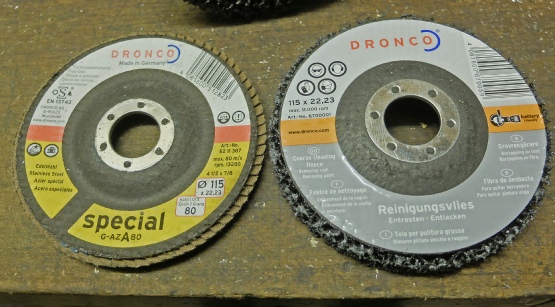
“Coarse cleaning fleece”


“Coarse cleaning fleece”
Flap disc

I’ve just discovered this Dronco “coarse cleaning fleece”. I wouldn’t like to meet a sheep with a fleece made out of this material! It’s great for cleaning mill scale and rust off steel. It will even clean cement off bricks (not off soft bricks as they will disappear in a cloud of dust -